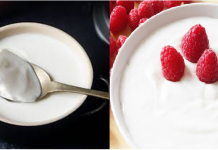 Calcium is a tricky mineral. All the foods that are rich in calcium are generally not very popular with kids. And in lactose-intolerant children, the problem can be compounded!
Calcium is a tricky mineral. All the foods that are rich in calcium are generally not very popular with kids. And in lactose-intolerant children, the problem can be compounded!
Calcium, as we all know, is what makes the bones and teeth strong. Throughout childhood, calcium is deposited in the bones, leading to attainment of peak bone mass and strength later in life. If there is a deficiency of bone-friendly nutrients (calcium and vitamin D) in this critical stage, it leads to a skeletal deficit that cannot be repaired in adolescent life, which may lead to brittle bones and osteoporosis in later life.
Children grow rapidly at an average rate of 6-7 cm in height and 1.5 to 3 kg in weight annually, and ensuring development of bone mass is critical at this growth phase, to maintain good bone health later in life. This phase places a huge demand on calcium supply to meet the increased growth requirements.
How much calcium do children need?
The Indian Council of Medical Research (ICMR) which has come up with the following recommended daily allowances (RDA) for calcium for children between 1 and 18 years of age.
- Age 1-9: 600 mg
- Age 10-18: 800 mg
For those children who love milk and curds, and drink two big glasses (totaling 400 ml per day) and eat a bowl of curd every day (150 ml) may just about meet the RDA levels of 600 mg for younger kids, but the older adults would be short of the RDA.
What other foods can ensure your child gets the recommended amounts of calcium?
For non-vegetarians, fish and seafood would be the best source of readily absorbed calcium. Many types of fish provide more than required amounts of calcium in 100 gm of edible portion. But deep frying, cold storage take away some amount of calcium.
For strict vegetarians, seeds, greens and some whole pulses are the best sources. However, calcium from plant foods is not well absorbed unlike animal foods. Many factors present in plant foods, known as “oxalates”, “phytates” or tannins, prevent calcium absorption. While 30 to 33 % of calcium from milk and milk products are absorbed, only about 5 to 20 % of calcium may be absorbed from green leaves, seeds and other whole pulses.
Calcium in foods high in oxalic acid (most green leaves) or phytic acid (such as raw beans, seeds, and nuts) may be poorly absorbed. Oxalates in particular are strong inhibitors of calcium absorption. As a result, additional servings of certain calcium-rich foods are needed to compensate for their low bioavailability. So all the “most popular” greens believed to be rich in calcium like spinach, amaranth, and seeds such as cumin and mustard seeds are also rich in oxalate and calcium is poorly absorbed from these.
Cruciferous vegetables such as cauliflower, broccoli, and turnips are low in oxalates and calcium from the greens of these may be better absorbed. Turnip greens, mustard greens and Bengal gram leaves provide fair amount of calcium.
While non-vegetarians and milk lovers have nothing to worry about as far as getting calcium, vegetarians may need to plan out their intakes carefully to compensate for the lack of availability in plant foods.
Suggested diet plan
A suggested diet plan that would provide 600 to 800 mg calcium (for those intolerant to milk, or for milk haters, curd, paneer or tofu are good replacements):
Morning: 1 glass of milk (200 ml) with honey
Breakfast: Paratha or idli/dosa with mint chutney
Lunch: Rice with rajma or veg pulao with whole horsegram sprouts
Evening: 1 glass of milk (200 ml) with honey
Snack: Til and jaggery chikki – 2 pieces or ragi malt
Dinner: Rice, fish and vegetables or roti stuffed with cauliflower/ turnip or mint leaves – 2 with veggies, curd and dal
 Calcium from milk is best absorbed when it is had without adding any other supplement or food to it. Mixing ragi malt or nuts with milk is a bad idea since oxalates and phytates in these interfere with calcium absorption. Stuffing roti or paratha with grated broccoli, or chopped mint, cauliflower greens, turnip greens are a good way of ensuring maximum calcium. Til is a great source of calcium but very little is absorbed. Adding jaggery to it will increase calcium available. Horsegram, rajma, soyabean and tofu are other good, low oxalate calcium sources.
Calcium from milk is best absorbed when it is had without adding any other supplement or food to it. Mixing ragi malt or nuts with milk is a bad idea since oxalates and phytates in these interfere with calcium absorption. Stuffing roti or paratha with grated broccoli, or chopped mint, cauliflower greens, turnip greens are a good way of ensuring maximum calcium. Til is a great source of calcium but very little is absorbed. Adding jaggery to it will increase calcium available. Horsegram, rajma, soyabean and tofu are other good, low oxalate calcium sources.
Visit gympik.com and find the top nutritionists in your area. Amplified Fitness Centre in VIP Road, Shape and Strength in Kalighat, IOSIS Wellness in Alipore, and Flash Fitness in Park Street Area are among the top centres in Kolkata that offer the services of nutrionists and dieticians.


 Traqade
Traqade






























